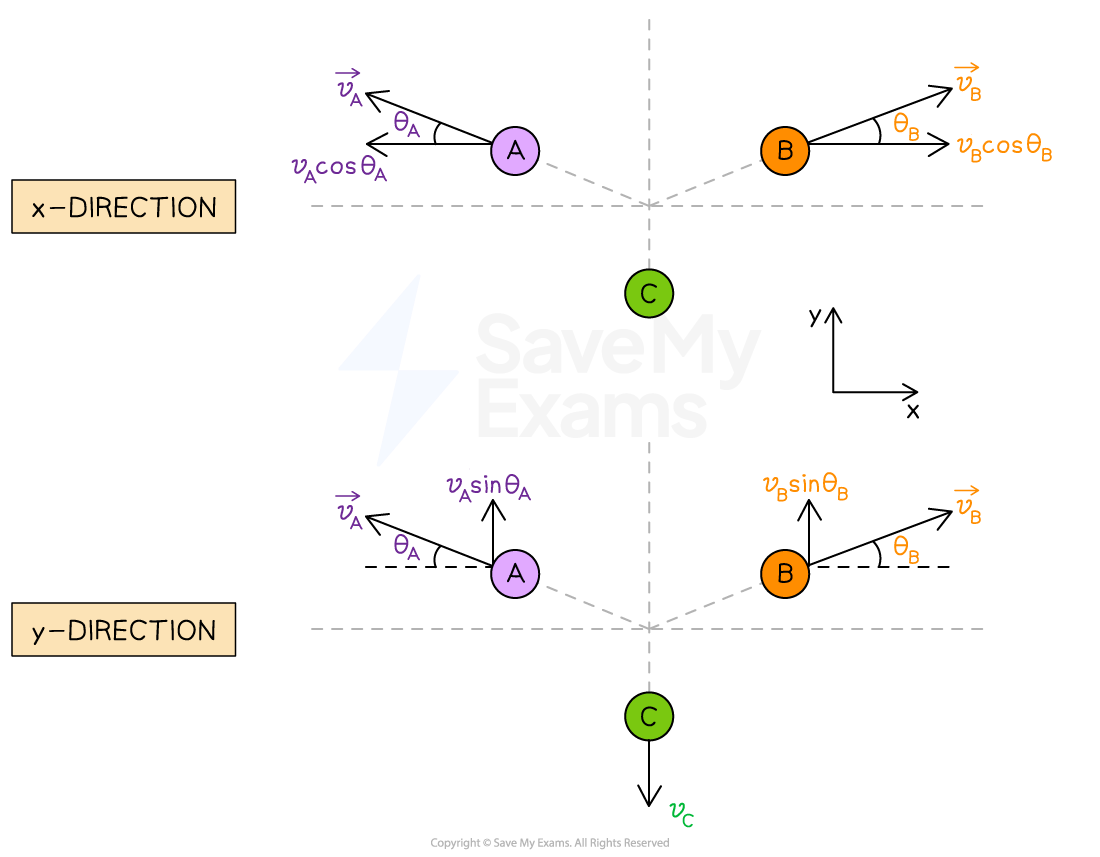Momentum in Explosions (College Board AP® Physics 1: Algebra-Based) : Study Guide
Momentum in explosions
The conservation of momentum principle can be used to analyze explosions
An explosion is defined as
An interaction in which forces internal to the system move objects within that system apart
Some examples of explosions include:
the recoil of a gun after shooting a bullet
the radioactive emission of a particle from an unstable nucleus
Explosions in one dimension
Explosions in one dimension (1D) usually involve one stationary object becoming two objects that move away from each other along the same line
Before the explosion, the velocity, and therefore momentum, is zero
After the collision, the velocity vectors are directed along the same axis and can be either positive or negative
When solving problems involving explosions in one dimension:
identify the objects included in the system, making sure there are no net external forces
write an expression for the momentum of each object after the explosion
write an expression for the total momentum of the system before and after the explosion
apply the conservation of momentum principle
solve for the unknown quantity

Applying the conservation of momentum principle (defining the positive direction to the right):
Since the velocity of each object is directed along the same axis, the vector notation can be removed
Explosions in two dimensions
Explosions in two dimensions (2D) usually involve one stationary object becoming two or more objects that move away from each other in different directions
Before the explosion, the velocity, and therefore momentum, is zero
After the explosion, the velocity vectors may have both horizontal and vertical components
When solving problems involving explosions in two dimensions:
identify the objects included in the system, making sure there are no net external forces
write expressions for the x- and y- components of the momentum of each object after the explosion
write expressions for the total momentum of the system in each direction before and after the explosion
apply the conservation of momentum principle to each direction separately
solve for the unknown quantity using Pythagoras' theorem

If no external forces act on a system, horizontal and vertical components of momentum are conserved
Applying the conservation of momentum principle:
The components of the velocities in the x-direction are:
The components of the velocities in the y-direction are:

Worked Example
A stationary uranium nucleus undergoes fission and splits into two fragments of unequal mass and two neutrons, where , as shown in the diagram.

Which of the following is true for the velocities of the fragments?
A
B
C
D
The correct answer is B
Answer:
Step 1: Analyze the scenario
The uranium nucleus is initially at rest, so the total momentum before the fission is zero
The total momentum of the system must be conserved
So, the final total momentum of the four fragments must also be zero
The fragments move along the same line, and the neutrons move along the same line, so, the individual components of their momenta are equal in magnitude and opposite in direction
Step 2: Eliminate incorrect options
For momentum to be conserved
the heavier the fragment, the lower the velocity
the lighter the fragment, the greater the velocity
Applying conservation of momentum in the direction of the neutrons:

The neutrons have equal mass, hence, they must have equal velocities
This eliminates option C
The neutrons are much lighter than the two fragments, so they must have higher velocities
This eliminates option D
Step 3: Deduce the correct option
Applying conservation of momentum in the direction of the fragments:

Since
, the ratio of the masses will be
, therefore:
Which is equivalent to:
Therefore, option B is correct

You've read 0 of your 5 free study guides this week
Sign up now. It’s free!
Did this page help you?

